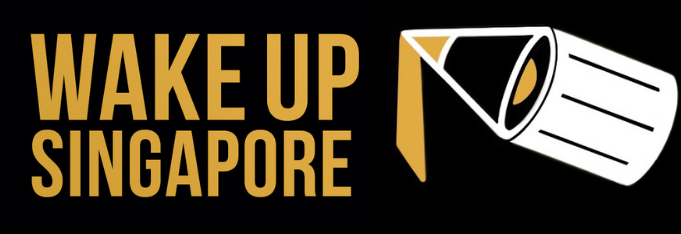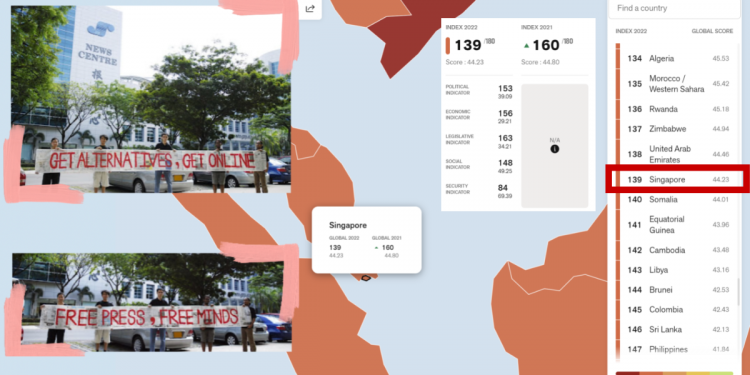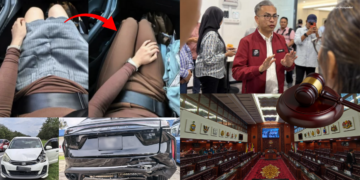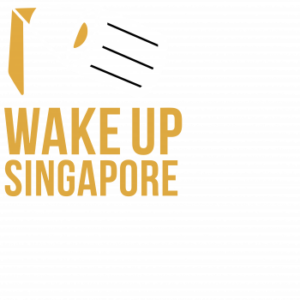Freedom of the Press has always been a salient issue in the socio-political arena in Singapore. From the time the Newspapers and Printing Presses Act was passed in 1974 to today, many have decried the shackling of the fourth estate. As these activists, who protested in front of the SPH building on 3 May 2008 (almost exactly 14 years ago), presciently noted, the rise of social media has helped create some alternatives to the national broadsheet.
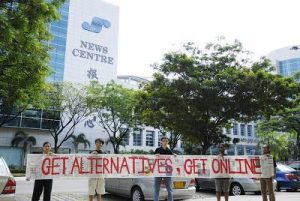
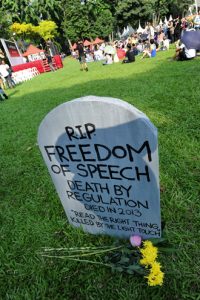
The World Press Freedom Index
One of the favourite reference points of those who like to slag the mainstream media is the Reporters without Borders’ (RSF) World Press Freedom Index. In the past, when Singapore was ranked 154 (in 2016) or 160 (in 2021), the mainstream media was often referred to as the “154” media. There is even a YouTube channel with more than 22,000 subscribers which reposts videos from the mainstream media titled, you guessed it, 154thmedia.
Questionable Methodology?
In February this year during an Institute of Policy Studies Lecture, Patrick Daniel, a veteran journalist with the Singapore Press Holdings, called into question the RSF’s methodology. He argued that the index is a measure of “the level of freedom available to the media”, not the quality of journalism.
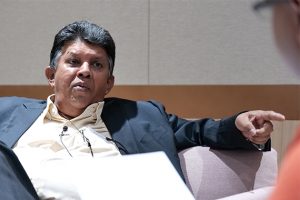
Daniel said that “it’s baffling to many people” that Singapore could be ranked one spot below Sudan and one spot above Somalia. He concluded by saying:
But there is a little bit of opacity in the methodology. I don’t want to rubbish them, they’ve been doing it for a long time, but there should be some kind of audit of their methodology.”
Similar critiques have been levelled by K Shanmugam, Minister for Home Affairs and Minister for Law. In 2009 (when Singapore was ranked 144), during the opening of the seasonal meeting of the New York state bar association International Section, the Minister was reported to have said that the rankings “struck him as quite absurd and divorced from reality”. In that same speech, he shed some light on Singapore’s approach to press reporting.
“Our approach on press reporting is simple: The press can criticize us, our policies. We do not seek to condemn that.
“But we demand the right of response, to be published in the journal that published the original article. We do not accept that they can decide whether to publish our response.”
More recently, during a Parliamentary debate in 2017, Minister Shanmugam said that “Afghanistan is ranked ahead of us. Pakistan is ranked ahead of us. I would invite RSF to please go there.”
The Minister said that “we have to be discerning about these rankings and how they are done and the political objectives behind them.”
RSF’s Methodology
RSF has published its methodology on it’s website, which can be accessed here.
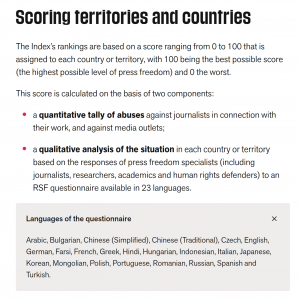
Each country or territory’s score is evaluated using five contextual indicators that reflect the press freedom situation in all of its complexity: political context, legal framework, economic context, sociocultural context and safety.
A subsidiary score ranging from 0 to 100 is calculated for each indicator. All of the subsidiary scores contribute equally to the global score. And within each indicator, all the questions and subquestions have equal weight.
From 160 Media to 139 Media
Daniel, who said that RSF “punished” Singapore for the passing of POFMA by dropping it by 7 places, actually predicted that Singapore’s ranking will drop further in 2022 with the passing of FICA last year. He was proven to be half-correct. Although our score did decrease, our ranking improved.
This year, Singapore’s rankings soared by 21 places from 160 to 139. We are now placed between countries like Rwanda, the UAE, and Somalia.
This is the highest rank that Singapore has received from RSF in the last decade. The discussion in the Singapore section of the report, however, does not indicate that RSF believes the situation in the city-state has gotten much better. In fact, the score given to Singapore has fallen slightly.
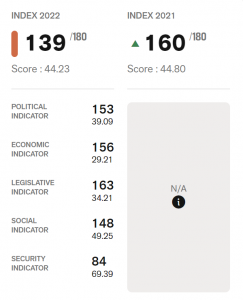
The report states that “Singapore boasts of being a model of economic development but it is an example of what not to be in regard to freedom of the press, which is almost non-existent.”
The report cites Singapore’s arbitrary laws, as well as acts like FICA and POFMA, and incidents like the shutdown of The Online Citizen (TOC) to account for such a low ranking.
The increase in Singapore’s ranking, despite a slight drop in score from previous years, may be attributed, in part, to the relative decline in the rankings of other countries, particularly those in Asia.
Press freedom has deteriorated dramatically, as evidenced by two major events. In Burma, the military coup of 2021 led to an extremely harsh repression of journalists. As a result, the country, ranked at the low end of RSF’s World Press Freedom Index (176th of 180), has become one of the world’s largest prisons for media professionals. In Afghanistan (156th), the Taliban’s seizure of power has further worsened conditions for reporters and news organisations, who are the targets of all forms of intimidation and violence.
The Asia-Pacific region, which holds more than half of the world’s population, is also affected by more structural issues. The first of these is the policy of absolute control of information by the government. While North Korea (180th) is the worst country for press freedom, China (175th) continues to extend its information control model not only within its borders, but also beyond them. Thus, the semi-autonomous region of Hong Kong (148th), now controlled by Beijing, has registered the steepest drop in ranking (68 places) in the 2022 Index. The governments of Vietnam (174e) and Singapore (139e) have also tightened their grip on the media
The report notes that in Asia, “press freedom has deteriorated dramatically”, with places like Hong Kong, the Philippines, Myanmar, Sri Lanka and others having dropped sharply in the rankings.

The report did not make mention of the fact that Terry Xu, the former chief editor of TOC, was in jail serving a 3-week sentence after being convicted of criminal defamation at the time the report was published.
You know, this is like one of those tests where you didn’t exactly do well, but others did much worse. Beneath the veneer of Singapore’s improvement in status relative to other countries, the underlying situation has remained largely bleak.
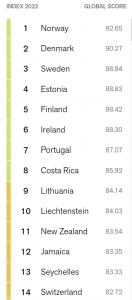
As a first-world country, we should aim to be ranked amongst the likes of Norway (1), New Zealand (11), and the rest of the countries in the picture above.
Since you have made it to the end of the article, follow Wake Up Singapore on Telegram!
